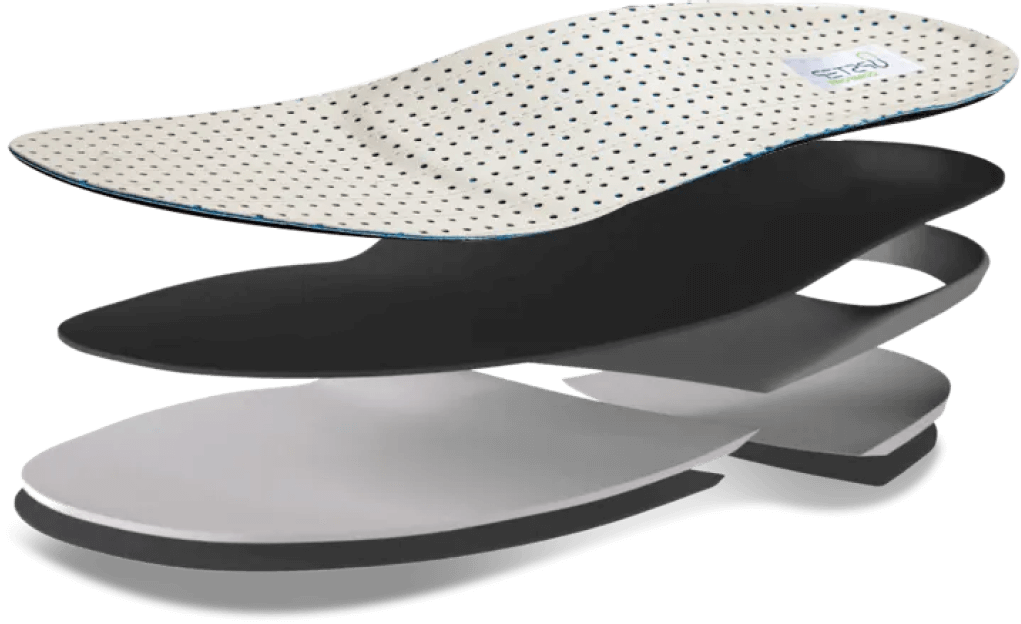How to stop insoles from squeaking while walking?
Asked 5 years ago
For anyone who wears inserts, do you get squeaky feet? I know it’s from the insole moving around in the shoe but no matter how many different kinds I use and in any kind of shoe, it’s always happening (and it’s loud and embarrassing!). I need cushioned insoles and some flexibility in my shoe for my PF. How do you stop this?
Upstep Team
Friday, May 28, 2021
If your inserts squeak excessively, it indicates that they don't fit well, so they aren't offering you the best support. The most obvious solution is to source more tightly fitting insoles.
Our recommendation is to get yourself a pair of our custom orthotics. They're made using a mold of your foot to give you the right fit and proper support you need. At Upstep, we offer custom insoles for various conditions, which are comfortable to wear for long periods and help the root cause of your problem.
The added benefit of fitting perfectly between your foot and your shoe is that there's no room for squeaking!
Jaycee Madden
Monday, June 28, 2021
Try putting one of these under your insert: talc powder, duct tape, moleskin, or a dryer sheet. You could also spray with silicone spray, or bevel the sides of the insert. The real issue is that the insert is moving in the shoe and creating friction. If it is a custom-made insert you shouldn't have this problem.
Abeera Maham
Wednesday, December 22, 2021
The friction from the device in your shoes causes squeaky orthotics. Some extremely basic solutions is to lubricate. Apply talcum powder generously beneath and over the device, or rub a candle around the edges.
If that doesn't work, consider the following alternatives:
- Apply duct tape or moleskin on the underside of the orthotic's distal end. The tape eliminates the squeak by reducing the abrasion friction of the orthotic against the insole.
- Another fantastic approach to stop the squeak while also deodorizing your running shoes is to place a dryer sheet under the device.
Lamar Winters
Thursday, July 07, 2022
Often the squeaking noise is due to the orthotics moving around in your shoe as you place your weight onto your foot. You can make use of a small piece of double sided tape to secure the orthotic down to your shoe. This should stop the insole from moving around within the shoe. Adhesive spray could also be considered as a potential way to solve the problem you are facing. This can be applied to the underside of the orthotics before placing them into your shoe of choice.
You can also make use of talcum power to dry up and create friction in the area in an effort to stop the insole from moving around in the shoe. It is important to consider if the insole is too small for the shoe, as this could be a potential reason for your insoles moving around. One should consider the age of the orthotic and if the material has worn down over long periods of use. Tightening up the laces of the shoes to ensure a snug fit can also be attempted to stop the squeaking noise from your insoles. Refrain from tightening the shoe to such a degree that discomfort is felt.
Babafemi Adebajo
Friday, October 28, 2022
Squeaking insoles are often a sign that your insoles do not fit properly. This is often the case with over-the-counter insoles that come in specific sizes and arch heights and need trimming to fit. It may be best to make a custom insole that factors in your exact foot need to stop the squeaking permanently.
Adan Haney
Thursday, January 18, 2024
To prevent insoles from squeaking or sliding while walking, you can try these steps:
- Inspect Insoles: Remove and check for wear or damage.
- Clean and Dry: Wash with mild soap, rinse, and let them air dry completely.
- Apply Powder or Lubricant: Use talcum or silicone-based lubricant to reduce friction.
- Reinsert Snugly: Securely place the dry and treated insoles into your shoes.
- Test and Adjust: Take a few steps to check. Readjust or add extra protection if needed.
- Consider Pads: Use adhesive-backed felt or moleskin pads for additional barriers.
If the issue persists, you can always consult a shoe specialist or podiatrist for further assistance.
Please follow our Community Guidelines
Related Articles

How to Rebuild Arches in Flat Feet
Janik Sundstrom
July 14, 2025

Do Bunion Correctors Really Work?
Babafemi Adebajo
December 18, 2024

6 Causes of Heel Pain in the Morning (& What to Do About It)
Janik Sundstrom
October 28, 2025
Can't find what you're looking for?







